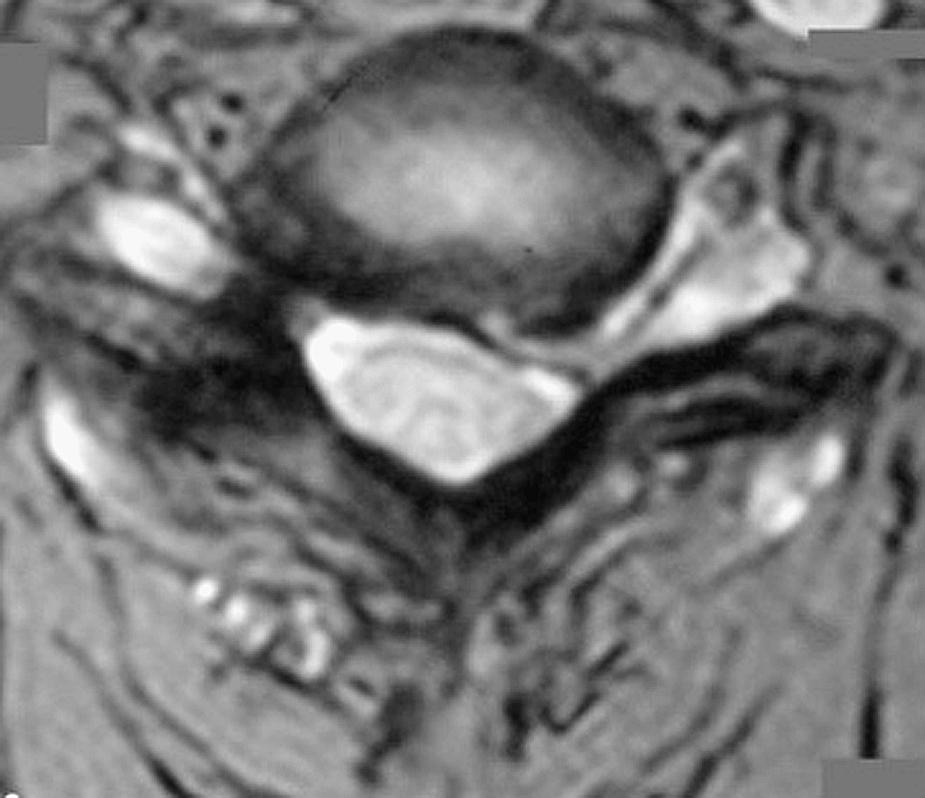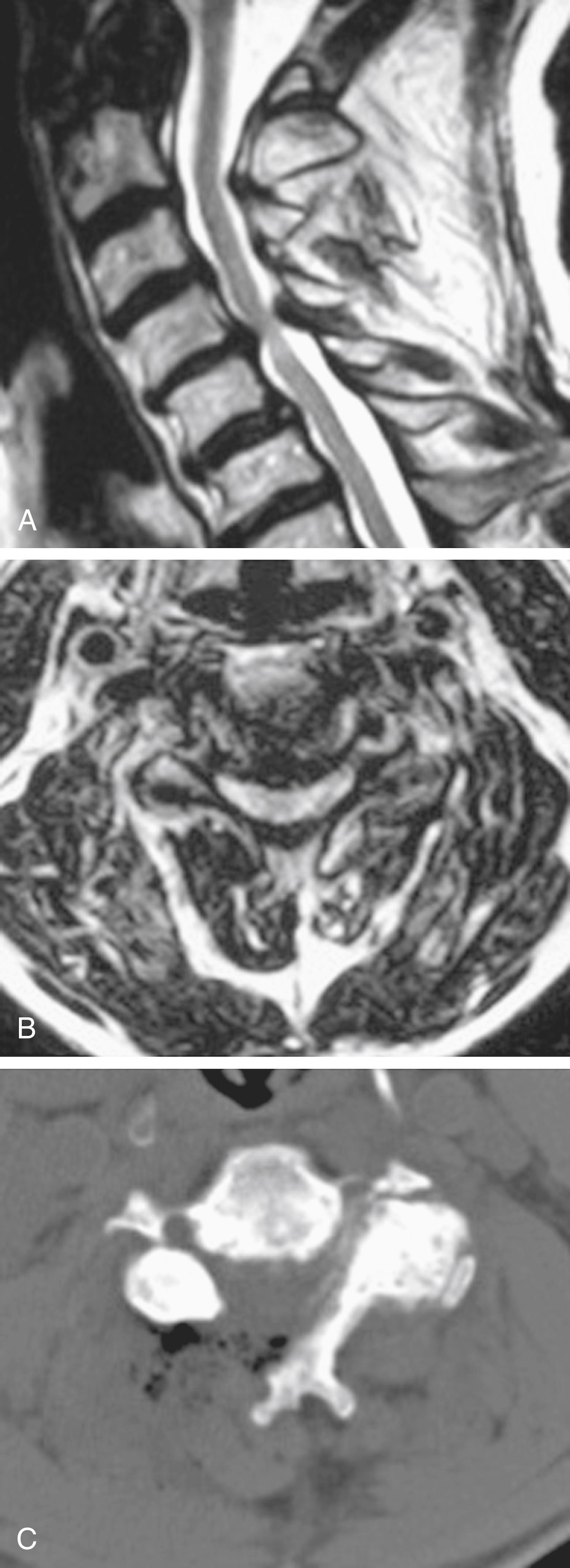Physical Address
304 North Cardinal St.
Dorchester Center, MA 02124
Posterior minimally invasive surgery (MIS) approaches to the cervical spine have been shown to have clinical outcomes that are comparable to traditional open approaches, with a reduction in length of hospital stay and narcotic use and an earlier time to mobilization.
Prospective and randomized controlled trials have shown comparable clinical outcomes in patients with cervical radiculopathy treated with MIS posterior cervical decompression or anterior cervical discectomy and fusion (ACDF).
Indications for MIS laminotomy/foraminotomy/discectomy include unilateral radiculopathy from lateral disc herniations or foraminal stenosis (single-level or multilevel), without instability, significant kyphosis, or severe axial neck pain or persistent or recurrent root symptoms following ACDF.
Arthrodesis options are in early stages. Lateral mass and transfacet options have been described. The MIS transfacet expandable cage system is a posterior cervical MIS technique that may be helpful in the treatment of unilateral single-level cervical radiculopathy.
Degenerative disease of the cervical spine can cause compression of neural elements through disc herniation, ligament and facet joint hypertrophy, and the formation of vertebral body end plate osteophytes. The effects of these changes can be exacerbated by a congenitally narrow spinal canal, segmental instability, and deformity. These dynamic processes can contribute to radiculopathy, myelopathy, or both, depending on the degree to which nerve roots or the spinal cord are affected. Many patients with radiculopathy or stable myelopathy can be managed with appropriate nonoperative measures, whereas those who remain symptomatic have multiple surgical options available for decompression. Surgical decompression is indicated for selected patients with neurological signs and symptoms of radiculopathy or myelopathy with corresponding radiographic evidence of neural compression. The cervical spine can be decompressed through either an anterior or a posterior approach, each of which has relative advantages and disadvantages. Anterior cervical discectomy and fusion (ACDF) is considered by many to be the gold standard for treatment of cervical radiculopathy, myelopathy, or myeloradiculopathy, but motion-preserving techniques including disc replacement and posterior cervical foraminotomy and minimally invasive surgery (MIS) techniques have become increasingly popular alternatives. When approaching a patient, the choice of approach is sometimes relatively clear, and often the problem can be addressed from either direction, with the ultimate decision balancing the risks and benefits of each method.
MIS and percutaneous techniques have been shown to preserve healthy tissues, better maintain intact spine biomechanics, shorten hospital stays, cause less postoperative pain, enable faster patient mobilization, reduce complications, minimize operative blood loss, and possibly even lead to reduced hospital costs as a result. This chapter focuses on MIS posterior cervical techniques and clinical outcomes.
Posterior cervical decompressive procedures are fundamental tools in the surgical treatment of symptomatic cervical degenerative spine disease. Even as anterior cervical procedures have gained prominence, posterior cervical laminoforaminotomy provides significant arm pain relief in up to 96% of patients and return of motor strength in up to 98% of patients. , Similarly, dorsal cervical decompression for cervical stenosis achieves neurological improvement in up to 83% of myelopathic patients undergoing either laminectomy or laminoplasty. , Anterior cervical approaches can adequately treat a variety of symptomatic cervical degenerative disease, but carry the risk of approach-specific complications including vascular injury, recurrent laryngeal nerve injury, increased airway edema, and dysphagia.
However, open dorsal approaches to the cervical spine require extensive muscle and soft tissue manipulation that leads to increased postoperative pain, spasm, dysfunction; can lead to muscular ischemia; and can be persistently disabling. , , Furthermore, preoperative loss of lordosis and long segment decompressions increase the risk for postoperative sagittal plane deformity, a complication that may increase the need for instrumented arthrodesis. Employing these extensive posterior fusion techniques increases operative risks, time, and blood loss; exacerbates early postoperative pain; and potentially contributes to adjacent-level degeneration.
The fundamentals of MIS techniques involve minimal muscle dissection and soft tissue trauma, while reducing operative time, blood loss, and hospitalization times and improving clinical outcomes. , To that end, the advent of muscle-splitting tubular retractor systems and the use of endoscopic technology or microscopy have allowed for the application of MIS techniques to dorsal cervical decompression procedures , and fixation.
In 1983, Williams reported the first microsurgical technique for dorsal cervical foraminotomy, and several MIS dorsal cervical techniques were described subsequently. , Burke and Caputy, and Roh et al. demonstrated a microendoscopic posterior cervical foraminotomy technique in cadavers, followed by a small clinical study of three patients providing a MIS approach through transmuscular dilation. , To avoid confusion and to simplify the description of all these techniques, we discuss the MIS paramedian (transtubular or transmuscular) cervical approach. All midline approaches are performed in a similar manner, using a single midline suprafascial incision and reflecting this laterally. Subsequent dilations and dissection occur via separate fascial incisions. An endoscope, a microscope, or loupes and a headlight can be used to perform MIS posterior cervical laminotomy/foraminotomy/discectomy, laminectomy, laminoplasty, , lateral mass fixation, and transfacet fusion cages.
The operative indications for MIS laminotomy/foraminotomy/discectomy are (1) unilateral single-root ( Fig. 108.1 ) or multiple-root cervical radiculopathy secondary to lateral disc herniation, foraminal stenosis (single-level or multilevel), without instability, significant kyphosis, or severe axial neck pain; (2) persistent or recurrent root symptoms following ACDF; (3) cervical disc disease in patients for whom anterior approaches are relatively contraindicated (e.g., ventral neck infection, tracheostomy, prior irradiation); and (4) cervicothoracic disc herniation and radiculopathy, to avoid potential ventral approach complications and when the anterior approach is less desirable (owing to a short neck or for other reasons). An anterior approach is generally most appropriate in cases of same-level bilateral radiculopathy, mesial foraminal disc herniation requiring significant manipulation of the cervical cord, central disc herniation, cervical instability, significant kyphosis, or ventral spinal cord disease.

Most patients who are candidates for a noninstrumented, dorsal cervical decompression are also candidates for MIS posterior cervical decompression: myelopathy or myeloradiculopathy, spinal cord compression from one to three adjacent cervical levels, and a lordotic cervical spine ( Fig. 108.2 ). Contraindications include severe ventral disease (disease that extends for more than three levels), segmental instability, and severe cervical kyphosis. MIS approaches preserve the dorsal tension band and muscle attachments, minimizing disruption of the osteoligamentous anatomy and the development of further cervical deformity.

MIS lateral mass screw insertion can be used to treat segmental instability after decompression or also for cases of facet dislocation, or even to augment previous ventral fusion techniques. , , , , , MIS cervical laminoplasty has also been described via a cadaveric feasibility study, which found the technique to be challenging.
MIS posterior cervical transfacet fusion cages can be used to treat patients with radiculopathy secondary to foraminal stenosis or facet-mediated pain without cervical kyphosis; to treat pseudoarthrosis after prior anterior cervical fusion in patients without significant cervical kyphosis; and to provide indirect decompression in patients with myelopathy or myeloradiculopathy secondary to buckling of the ligamentum flavum. Transfacet fusion cages can be used as an alternative to posterior cervical fusion with lateral mass fixation, in conjunction with anterior decompression and fusion, or for adjacent segment disease. , ,
The preoperative radiographic evaluation follows a detailed history and physical examination and should include magnetic resonance imaging (MRI) or postmyelographic computed tomography, in addition to anteroposterior (AP), lateral, and dynamic cervical radiographs. Electromyography (EMG) and nerve conduction studies may also assist to confirm the localization of radicular compression. Selective nerve root blocks can also be a useful additional therapeutic and diagnostic tool. All patients with pure radiculopathy who go on to surgery have failed a trial of conservative therapy, which includes oral medications, physical therapy, or steroid injections. Cervical spondylotic myelopathy patients undergo a careful analysis of their disease progression, physical examination, radiographic studies, and comorbidities. All patients are carefully counseled regarding the risks and benefits of and alternatives to surgery.
General endotracheal anesthesia is induced on a standard electric operating table. A neurophysiological monitoring array with capabilities for somatosensory-evoked potentials, motor-evoked potentials, and free-running EMG is put in place. In cases of myelopathy, fiberoptic intubation may be elected, and evoked potentials are compared before and after positioning to identify positioning-related cord ischemia. Maintenance of normotension to avoid spinal cord hypoperfusion is best directed with continuous blood pressure measurements afforded by an arterial line. Measures to detect and treat air embolism, such as a precordial Doppler and a central line, are options but have not yet proved necessary. Given the small exposure, the risk of air embolism is low. A urinary catheter is generally not necessary for one- or two-level procedures. Routine perioperative antibiotics are administered. Relaxants are minimized after induction to allow for effective neurophysiological monitoring.
Become a Clinical Tree membership for Full access and enjoy Unlimited articles
If you are a member. Log in here